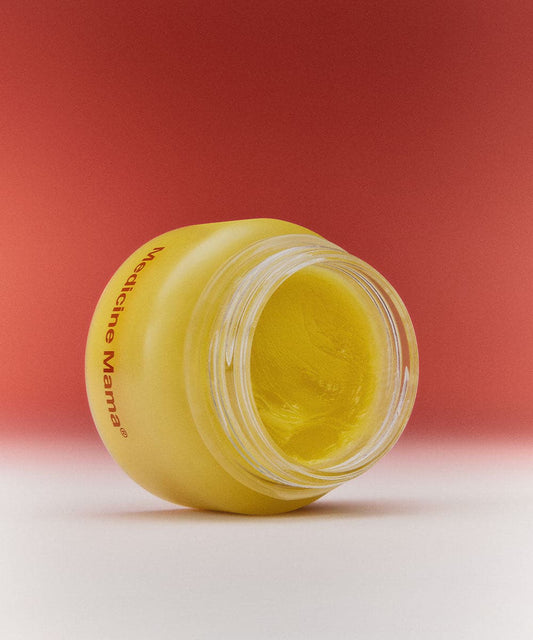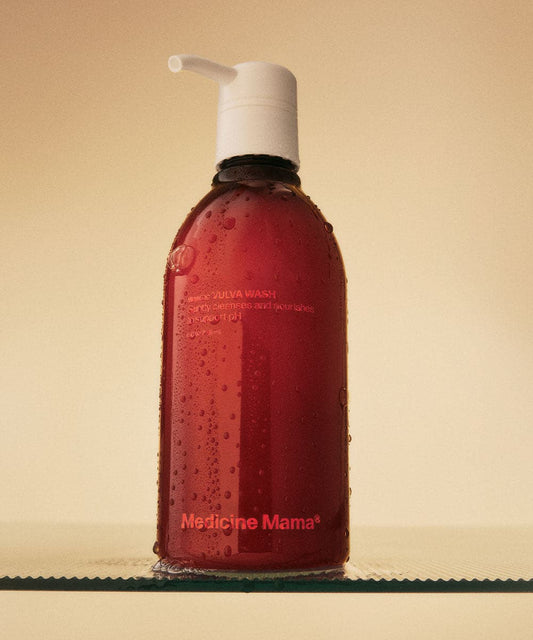Reviewed by | Dr. Clare Bertucio MD
Understanding vulva cysts, particularly Bartholin's gland cysts and abscesses, is crucial for women's health awareness. These conditions can cause discomfort and affect your daily life; it’s essential to know their symptoms, causes, and treatment options.
By diving into the anatomy and function of Bartholin's glands, we can better understand how these cysts develop and the implications for overall vaginal health. We’ll cover everything from basic anatomy to advanced treatment options.
What Is the Anatomy and Function of Bartholin's Glands?
Bartholin's glands, located on either side of the vaginal opening within the labia minora, play a crucial role in vaginal lubrication and health. These glands, typically pea-sized, are responsible for producing a clear fluid that helps lubricate the vaginal opening during sexual arousal.
They are positioned at the four and eight o'clock positions relative to the vaginal opening. Bartholin's glands are essential for maintaining vaginal moisture and reducing friction during intercourse.
The glands are connected to the surface through tiny ducts that facilitate the release of their secretions into the vaginal vestibule. When these ducts become obstructed, usually due to a buildup of fluid or debris, a Bartholin's gland cyst can form. In some cases, the cyst may become infected, leading to the development of a Bartholin's gland abscess.
What Are the Different Types of Vulva Cysts?
Vulva cysts are fluid-filled sacs that can develop anywhere on or around the vulva. They may vary in size and can cause discomfort or pain depending on their location and size.
Let’s take a close look at the different types of vulva cysts so you can have a better understanding of what to look for and how to treat cysts should you find them on your vulva. That said, remember that it’s always a good idea to consult a medical professional if you think you may have a vulva cyst.
Bartholin's Gland Cysts and Abscesses
Bartholin's glands, located on each side of the vaginal opening, can develop cysts when their ducts become blocked, typically by a buildup of fluid. This results in a painless swelling near the vaginal opening.
If the Bartholin’s cyst becomes infected, it can lead to an abscess, which can cause pain, swelling, and sometimes fever. Treatment options range from warm compresses and sitz baths for smaller cysts to drainage or surgical procedures like marsupialization for abscesses.
Epidermoid Cysts
These cysts are often caused by blocked hair follicles or skin trauma that forces the skin cells deeper into the tissue. Epidermoid cysts are filled with keratin, a protein found in the skin, and are typically firm to the touch. They can develop anywhere on the vulva and may require surgical removal if they become large or painful.
Sebaceous Cysts
Sebaceous cysts result from blocked sebaceous glands that produce oil for the skin and hair. These cysts are filled with a yellowish, oily substance called sebum and are generally painless unless they become infected. Treatment may involve draining the cyst or surgical removal if it recurs or causes discomfort.
Skene's Duct Cysts
Skene's glands, also known as periurethral glands, can develop cysts when their ducts become obstructed. These cysts are less common but can cause discomfort or pain near the urethral opening. Treatment options include warm compresses, antibiotics for infections, or drainage for larger cysts.
Gartner's Duct Cysts
Gartner's ducts are remnants of fetal development and can occasionally develop cysts in the vaginal walls. These cysts are usually small and asymptomatic but may require treatment if they become large or cause discomfort.
What Are the Causes and Risk Factors for Vulva Cysts?
Vulva cysts can develop due to various factors related to glandular blockages, infections, or developmental remnants. Understanding the causes and risk factors of vulva cysts can help you identify potential triggers and seek timely medical intervention.
Blocked Glands
The most common cause of vulva cysts is the blockage of glands that produce fluids for lubrication or protection.
For instance, Bartholin's gland cysts form when the ducts leading from the gland to the vaginal opening become obstructed, leading to fluid accumulation and cyst formation. Similarly, sebaceous cysts develop when the openings of sebaceous glands, which produce oil for the skin, become blocked.
Infections
Infections can contribute to the development of vulva cysts, especially when a blocked gland becomes inflamed or infected. Bartholin's gland cysts can progress to abscesses if bacteria enter through the obstructed duct, which can cause pain, swelling, and sometimes fever.
Sexually transmitted infections (STIs) such as chlamydia or gonorrhea can also increase the risk of developing cysts due to their impact on glandular health and local inflammation.
Hormonal Changes
Hormonal fluctuations, particularly during puberty, pregnancy, or menopause, can also influence glandular activity and increase the likelihood of cyst formation. Changes in hormone levels can affect the production and composition of glandular secretions, potentially leading to blockages and cyst development.
Trauma or Injury
Physical trauma to the vulvar area, such as during childbirth, surgery, or accidents, can sometimes lead to the formation of cysts. Trauma can disrupt normal tissue structure or cause scarring, which may contribute to glandular blockages or cyst formation over time.
Developmental Remnants
Certain cysts, such as Gartner's duct cysts, are remnants of embryonic development. These cysts typically form along the vaginal walls from tissue remnants that did not fully regress during fetal development.
What Are the Symptoms and Diagnosis Practices for Vulva Cysts?
Vulva cysts can manifest with varying symptoms depending on their size, location, and whether they are infected or not. Recognizing these symptoms and seeking timely medical evaluation is crucial for proper diagnosis and management.
Symptoms
Vulva cysts may present with the following signs and symptoms:
-
Pain or Discomfort: Depending on the size and location of the cyst, you may experience pain or discomfort, especially during activities such as walking, sitting, or sexual intercourse.
-
Swelling: Visible swelling or a palpable lump in the vulvar area can indicate the presence of a cyst.
-
Redness and Warmth: If the cyst becomes infected, the surrounding skin may appear red and feel warm to the touch.
-
Painful Urination: In cases where the cyst is pressing on nearby structures or causing inflammation, you may experience discomfort or pain during urination.
- Discharge: Some cysts, particularly Bartholin's gland cysts, may produce a discharge that varies in consistency and color.
Diagnosis
Diagnosing vulva cysts typically involves:
-
Physical Examination: Your healthcare provider will perform a physical examination of the vulvar area to assess the size, location, and characteristics of the cyst. They may also evaluate any accompanying symptoms such as pain or inflammation.
-
Medical History: Providing a detailed medical history, including any past surgeries, infections, or symptoms related to the cyst, helps in establishing the diagnosis.
-
Imaging Studies: In some cases, imaging tests such as ultrasound may be used to visualize the cyst and its internal structures more clearly, especially if the cyst is deep-seated or if there are concerns about its size or composition.
- Biopsy: If the cyst appears unusual or there is uncertainty about its nature, your healthcare provider may recommend a biopsy to examine a sample of tissue under a microscope.
What Are Treatment Options for Vulva Cysts?
The treatment approach for vulva cysts depends on several factors and can involve several different strategies for managing the symptoms. Treatment aims to alleviate symptoms, reduce the size of the cyst, and prevent recurrence.
Observation and Home Care
Small, asymptomatic cysts may not require immediate treatment and can be monitored over time. Home self-care measures such as warm compresses or sitz baths (immersing the affected area in a few inches of warm water) can help alleviate discomfort and promote drainage in some cases.
Using a gentle, chemical-free feminine wash can help keep your vulva clean without risking further irritation as the cyst heals.
Medical Procedures
For infected cysts or those causing significant discomfort, your healthcare provider may perform a minor surgical procedure called incision and drainage. During this procedure, the cyst is punctured and drained to relieve pressure and pain. This is often done under local anesthesia in a clinic or office setting.
Marsupialization is commonly used for recurrent Bartholin's gland cysts or abscesses. It involves creating a small opening in the cyst to allow continuous drainage and prevent fluid buildup. Depending on the size and location of the cyst, it is typically performed under local or general anesthesia.
Word Catheter Placement
Specifically for Bartholin's duct cysts or abscesses, a word catheter may be inserted into the cyst cavity after drainage to maintain continuous drainage and promote healing. This outpatient procedure helps prevent recurrence by allowing the gland to heal while keeping the duct open.
Excision
Surgical excision may be necessary in rare cases where cysts are large, recurrent, or complex. This involves removing the entire cyst and sometimes part of the affected gland. Excision is typically performed under general anesthesia and requires sutures for closure.
Antibiotics
If the cyst is infected or there is a risk of infection, your healthcare provider may prescribe antibiotics to treat the underlying bacterial infection and prevent complications.
Follow-Up Care
After treatment, regular follow-up appointments with your healthcare provider are important to monitor healing, assess for recurrence, and address any concerns or complications.
Wrapping Up
Understanding vulva cysts involves recognizing the diverse types, causes, symptoms, and treatment options available. While many cysts resolve on their own or with minimal intervention, some require medical attention, including drainage procedures or surgical interventions like marsupialization or excision.
Prompt consultation with a healthcare provider is crucial for accurate diagnosis and tailored management to ensure relief from discomfort and reduce the risk of recurrence. By prioritizing awareness, good hygiene practices, and timely medical care, you can effectively address vulva cysts and maintain optimal vulvar health.
At Medicine Mama, we believe it’s always best to seek professional guidance for persistent symptoms or concerns regarding vulva cysts.
Disclaimer: The information provided on this blog is for general informational and educational purposes only. All content, including text, images, graphics, and other material, is not intended to be a substitute for professional medical advice, diagnosis, or treatment.
Always seek the guidance of your physician or other qualified health professional with any questions you may have regarding a medical condition, treatment, or wellness program. Never disregard the advice of a medical professional or delay in seeking it because of something you have read on this website.
Sources:
Epidermal Inclusion Cysts (Sebaceous Cysts): Treatment & Causes | Cleveland Clinic
Bartholin's cyst | Mayo Clinic
How To Recognize If A Wound Is Infected or Not | Wound Care Surgeons
Marsupialization: Purpose, Procedure, Side Effects & Recovery | Cleveland Clinic



